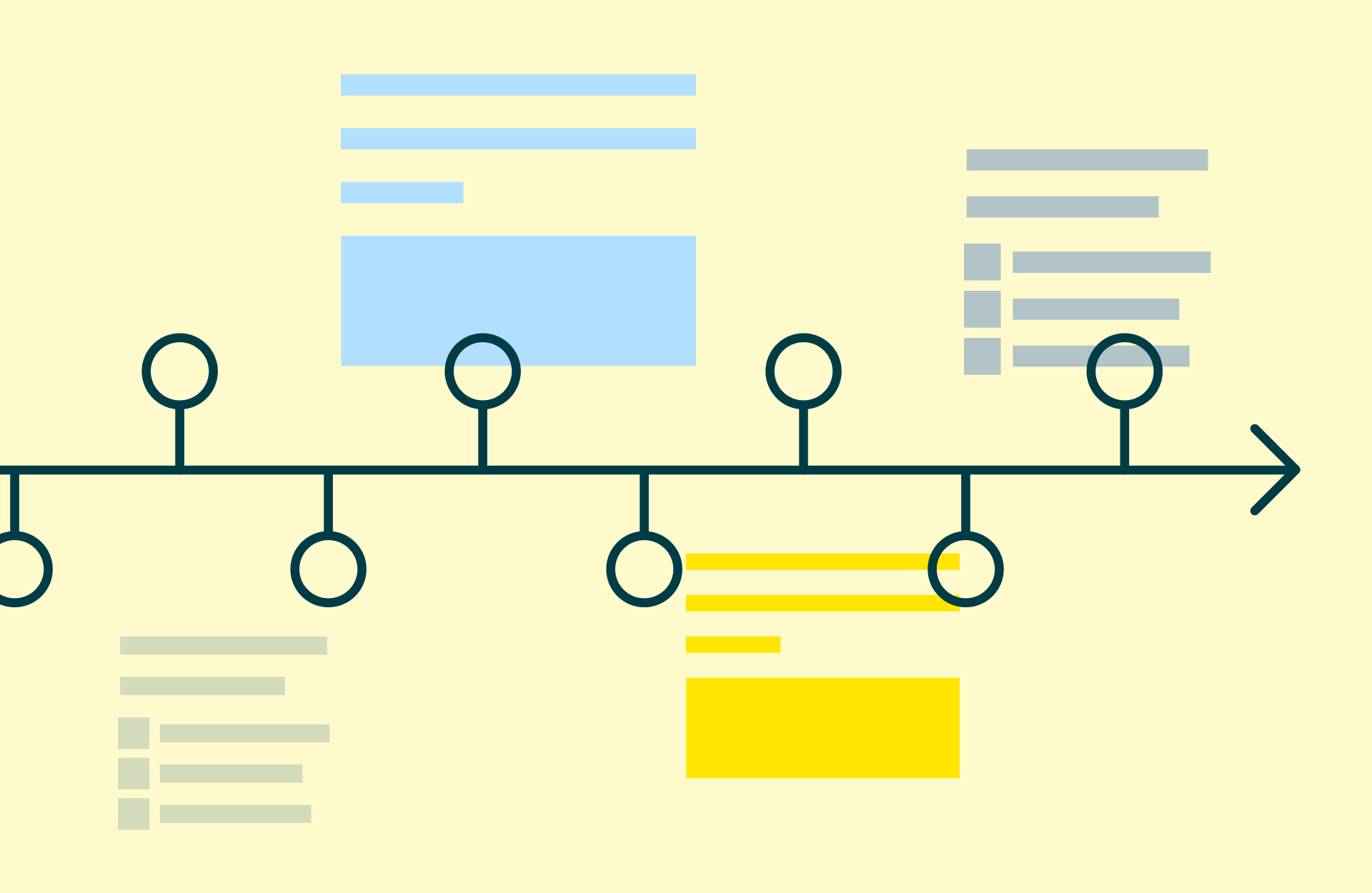Rubrics are scoring criteria for grading or marking student assessment. When shared before assessment, rubrics communicate to students how they will be evaluated and how they should demonstrate their knowledge. Rubrics also clarify any marking or grading outcomes, helping students understand why they received their particular score or grade. In sum, a good rubric promotes student learning.
It’s important to consider the history of rubrics, as pedagogy continues to transform. How did we get here? When did rubrics become widely used? What were the goals of rubrics in the beginning?
The first use of the word rubric, the root of which is “ruber,” the Latin word for red, was to describe sections of Medieval illuminated manuscripts written in red ink—often to demarcate section headings, initial capitals, and religiously significant names.
In their 2018 research, Brooks states, “Rubrics were first proposed as a tool to analyze writing in 1912 when Noyes suggested the use of a rubric as a means of standardizing the evaluation of student compositions: ‘Our present methods of measuring compositions are controlled too much by personal opinion, which varies with the individual. What is wanted is a clear-cut, concrete standard of measurement which will mean the same thing to all people in all places and is not dependent upon the opinion of any individual’” (Noyes, 1912 as cited in Turley & Gallagher, 2008, p.88).
It wasn’t until the 1990s, when standards-based educational reforms were first mandated and implemented, that rubrics became more widespread. In fact, it was then that the word “rubrics” became a popular pedagogical term to describe “scoring guides” to communicate to students how they will be assessed.
Notable pedagogist, Thomas R. Guskey, states, “Interest in rubrics surged during the 1990s as educators turned their focus to documenting student achievement of specific learning standards. Today, rubrics for describing and assessing student performance can be found at every level of education, from preschool and kindergarten to graduate and professional school.”
Following U.S. federal guidelines, states began designing assessments to measure student learning against those standards (Weiss, Knapp, Hollweg, & Burrill, 2002, p. 59). Individual classrooms then, in order to align themselves with mandates and learning objectives, began using standards and rubrics.
Rubrics have since evolved into a sophisticated dialogue about different approaches and methodologies, whether they be holistic, analytic, or single-point rubrics that each foster different components of learning. Regardless of the kind of scoring guide, research has found that “assessment rubrics work in a number of ways to advance student learning in higher education (Wolf & Stevens, 2007). They not only improve assessment quality (Arter & McTighe 2001), they can also enhance teaching and learning, with particular potential for non-traditional, first generation, and minority students (Wolf & Stevens, 2007). In addition, rubrics can be a vital component of an effective outcomes assessment system, contributing to program improvement and university accreditation (Angelo 2002)” (Wolf, Connelly, & Komara, 2008).
Globally, rubrics have become more popular as they enhance the feedback process. “An increasing emphasis on formative assessment,” according to Singaporean researchers Ragupathi and Lee, “has fueled a push toward the use of rubrics in higher education as they focus on the criteria for quality of student work. The use of rubrics and scoring guides give students a better understanding of what is being assessed, on what criteria grades are based, and what standards are expected” (2020, p. 73).
In global education settings, rubrics are at various stages of implementation within academia. Cultural context informs the use of rubrics, particularly in Asia. In their 2019 research paper entitled “Under a Top Down Rubric Policy: The Perceptions and Actualisations of Assessment for Learning and Rubric in Higher Education in Hong Kong,” Doris Yin Kei Chong discusses challenges of rubrics at a Hong Kong university:
“At the basic level, teachers need to be educated on teaching and giving opportunities to students to engage in the evaluative criteria of rubrics. It is also suggested that all stakeholders be included when drafting or refining a policy. Input from various stakeholder groups can enhance approval and enactment. While this suggested model applies directly to this research context, it can also provide insights to other universities in Hong Kong and in certain Confucian-influenced countries where similar characteristics are shared, for example those influenced by the Confucian culture yet marginalised by globalisation” (p. 192).
Other countries within Asia are also beginning to examine rubrics in the wake of new education standards. “In Japan, rubrics have attracted considerable attention since the mid-2000s, but are still a relatively novel concept. Japanese universities have focused more attention on rubrics or rubric-like tools following the revision of standards for establishment of universities set by MEXT in 2011” (Ito, 2015 p. 39).
Despite challenges, as Ito states in their research entitled, “Is a Rubric Worth the Time and Effort? Conditions for Success,” rubrics promote learning and guide instruction. Rubrics are a best practice and challenge educators to reassess their pedagogical approaches and pivot towards authentic and student-centered learning.
Assessments have continued to be an embedded part of the student educational journey; when rubrics are included, they strengthen assessment in the following ways, according to Wolf & Stevens’ research entitled, “The Role of Assessment in Advancing and Assessing Student Learning” :
- Rubrics make the learning target more clear
- Rubrics guide instructional design and delivery
- Rubrics make the assessment more accurate and fair
- Rubrics provide students with a tool for self-assessment and peer feedback
- Rubrics have the potential to advance the learning of students of color, first-generation students, and those from non-traditional settings (2007).
As we look forward to pedagogical innovation, it’s also important to look back and see the path along which rubrics evolved to their place within classrooms. Standards will likely continue to have a place within the landscape—and rubrics ensure that assessment of those standards is fair and accurate and part of end-to-end assessment with integrity.






